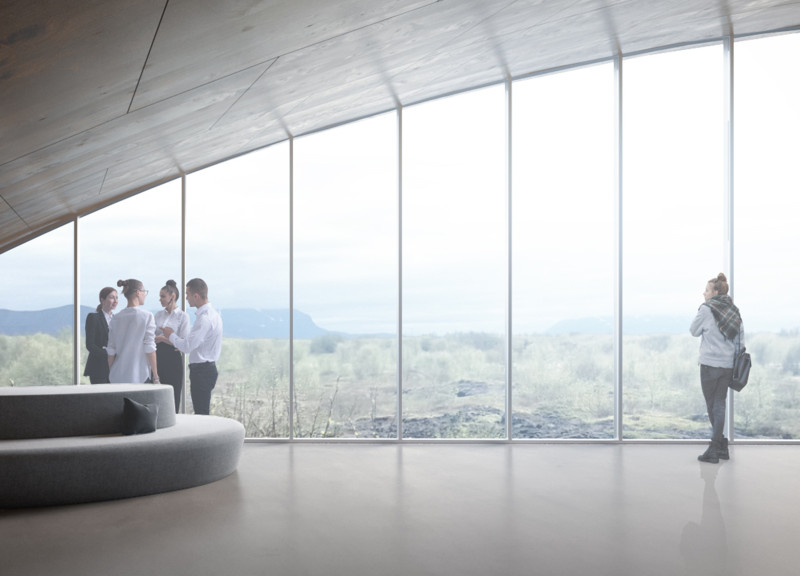5 key facts about this project
The Iceland Volcano Museum is situated in Iceland, a land known for its dramatic geological features. The museum is designed to inform visitors about volcanic activity and the geological history of the region. It combines practical spaces for exhibitions, administrative functions, and visitor amenities, all while connecting to the natural landscape. This thoughtful design emphasizes the relationship between education and the powerful phenomena of nature.
Spatial Organization
The layout of the museum includes a Mezzanine Floor that serves several essential functions. On this level, visitors will find a Technical Space, a Multipurpose Exhibition Hall, Administration and Offices, and areas for visitor services, including a Cafeteria and a Mini-Hotel. The arrangement encourages engagement with the exhibits while ensuring comfort and accessibility for all.
Structural Integrity
On the Ground Floor, the design accommodates critical operational areas. Here, Exhibition Halls, Offices, a Cloakroom, a Conference Room, and a Social Room are arranged to support a variety of activities. This thoughtful configuration allows for flexibility, catering to both educational and social interactions. A Load-Bearing Structure adds stability to the building and facilitates the integration of diverse architectural elements.
Material Selection
The museum features a Metal Facade and Aluminium Composite Panels for Facade Cladding. Both materials are chosen for their durability, ensuring the structure can withstand Iceland’s unpredictable weather. This choice also contributes to a modern visual appeal. The materials create an interesting contrast with the natural environment, enhancing the relationship between the building and its surroundings.
Elevational Design
The elevations, especially the South and West faces, engage with the landscape in an intentional way. The building's geometric shapes and well-placed openings allow for natural light to fill the interior spaces. It also frames views of the unique landscapes outside. This design approach enhances learning by connecting visitors visually and spatially to the geological context surrounding the museum.
From the details of the facade to the careful arrangement of spaces, the design reflects a commitment to education and community. The architectural choices serve to deepen the understanding of Iceland’s volcanic wonders, inviting visitors to explore both the exhibit and the incredible environment beyond.






















































